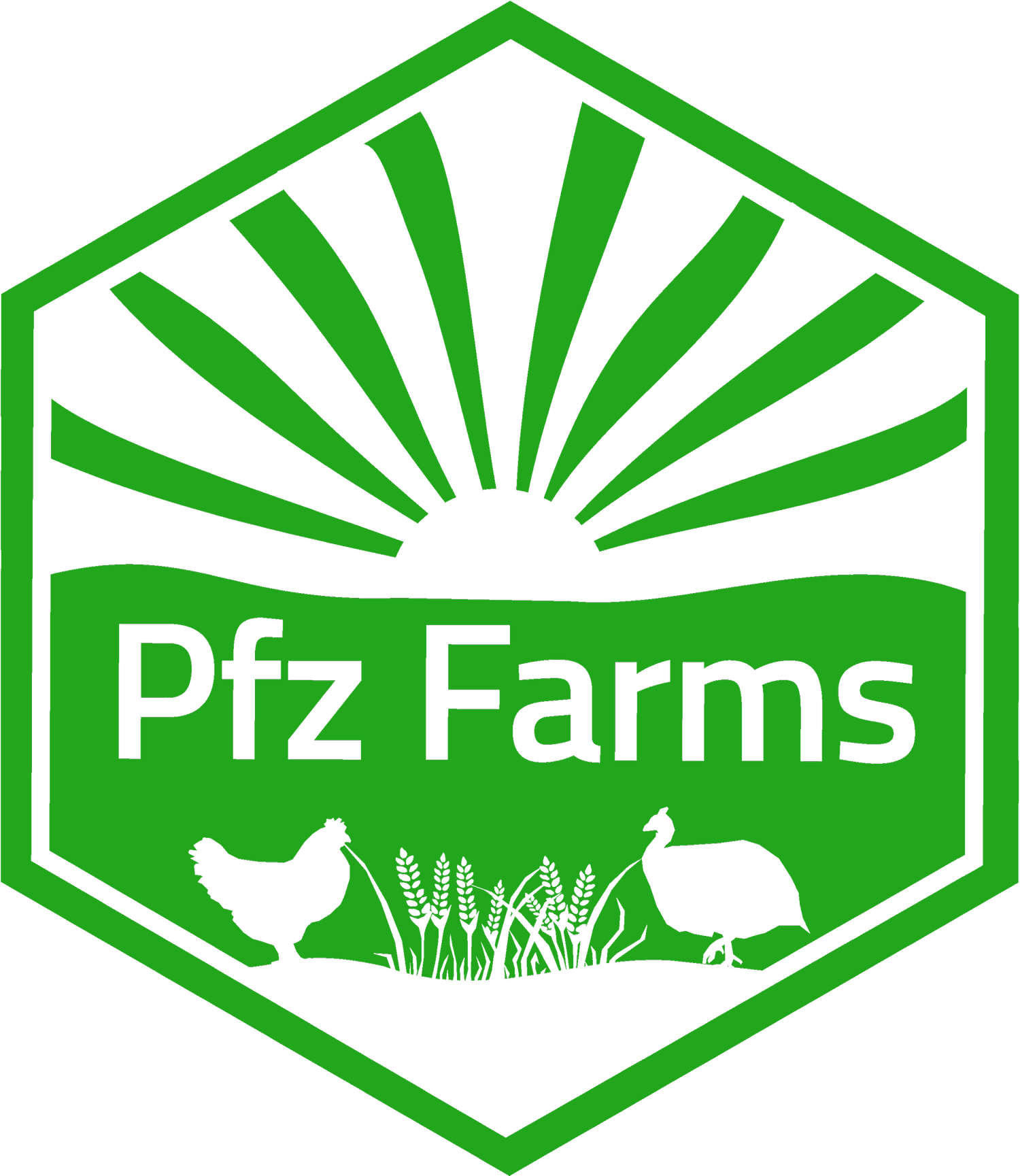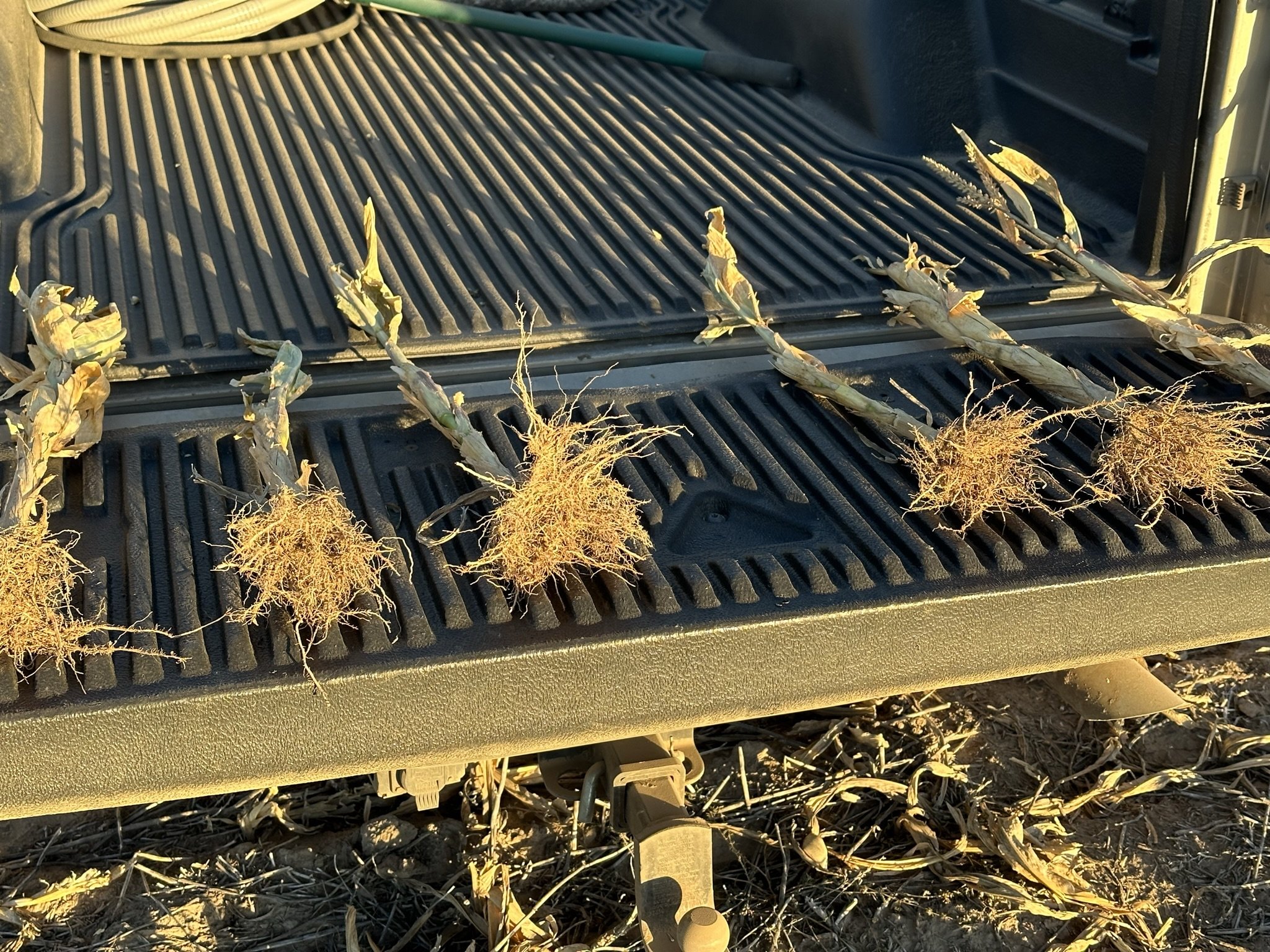
The Methods
Discover why you’re not alone in the journey to implementing soil health
Questioning Everything
Just like everything in life there’s growth and change. Farming is no different and in all of the choices, there are areas with significant upsides, and with that there are also trade offs that have to be pondered. How Pfaltzgraff Farms ended up where we are now, like we’re sure your farm has seen too, is full of these ponderings.
We’ve always been looking for better ways to raise crops. When Roy III’s (referred to as “Roy from here forward for ease!) parents started farming, tillage was common and Roy’s dad saw the downside. It was very clear seeing the blowing and washing away of soil that tillage wasn’t the best for the land. With that his methods evolved and starting in the early 80’s he began no-till planting, but still used tillage for fallow soils.
Still, he would see during the fallow year of tillage that it was causing the same issues, even if not as severely. He continued the practice and over the years, more crops were added that would help the farm to be more profitable without ever fully realizing the benefits that those crops would bring to the soil.
Evolution
In 1999, Roy graduated college and returned to the farm the first time. The decision was made to no longer till the soil and fallow the fields with herbicides instead. This helped but we weren’t seeing the changes that we had hoped. Roy eventually left the farm due to lack of profitability and losing his farm lease.
In the fall of 2016, Roy was asked by his parents if he would be interested in returning. Had he chosen not to, like so many others, they would lease out the land and stop farming. The labor of farming had simply become too physically demanding. Roy agreed to return with one stipulation, we had to find a way to do things differently, better. He refused to invest his life’s work and not make an impact, which has been the driving force for the continued evolution we see each year here.
In 2017, we all attended the annual Colorado Conservation Tillage Association conference in Burlington, Colorado. The previous year had been profitable, but something was missing. We were employing the same practices for the last eighteen years of no-till and it didn't seem like we were getting anywhere.
At the conference (which is highly recommended) we attended a number of breakout sessions specific to the farm’s needs. Roy attended the presentation on a new soil test that measures specific nutrients the soil produces naturally, the Haney test. This caught his attention because certain fields have always produced higher quality grains and better yields than they should have according to the results of the traditional soil tests that were used.
We believed that practicing no-till for years was the reason behind the performance of these fields, but it wasn’t consistent across the farm. While the new soil test might give some insight, there were other pieces still to learn. Which leads us to the other impactful conference later the same spring.
Rather than leaving the fields fallow for a year, we learned about the use of field peas in our rotation. We’ve always raised multiple crops, and sunflowers have truly opened our eyes to the impact individual crops can have on a field. We’ve observed over the years that their deep roots pull nutrients up into the topsoil, which can impact a field even eight years later. This has been proven repeatedly with the Haney soil test. Thanks to new satellite technology, we’re continuing to see how powerful diversity in our crops can be.
Back to the field peas. Over the coming months, we discussed what we’d learned and the opportunities the farm could implement right away. The decision was made to integrate the Haney Test and to add field peas into the rotation. Our discussions continued into new realms for us; soil health and regenerative agriculture moved to the forefront. Little did we know what changes this would bring.
Evidence of Change
Since that pivotal conference in 2017, we’ve added more diversity to our rotation raising as many as eighteen different crops in a season. We’ve also continued tracking the impacts of each crop with the use of the Haney test, and opened our farm to research with CSU and other organizations focused on soil health. Some changes we’ve seen are:
Reduction in fertilizer and pesticide usage; resulting in higher profitability
Increased variability in root systems combined with no-till has resulted in higher infiltrations rates, starting upwards of twelve inches of rain an hour and as the profile fills dropping to just under two inches per hour in saturated soils, and no flooding except during very heavy heavy rains
Narrow row spacing is decreasing pan evaporation and giving crops more resilience to drought. We were one of the only farms with a harvest during the worst of the recent drought.
Increase in carbon sequestration, shown in multiple research projects currently underway
Higher nutritive value of the grains grown on our farm
Innovation in practices to produce cleaner grain at harvest
There continues to be more evidence that the blending of modern methods with nature's biome is the future of agriculture. When crops are dug up to check root health there are rhizosheaths surrounding the roots. In this mass, sometimes called dreadlocks, the interaction between roots, bacteria, and fungi takes place. The roots exude solutions that contain sugars and other compounds that feed the soil fauna, and in return, they transfer nutrients and other compounds to the plants. When the soil health and organic matter is elevated in the soil, the nutrients are concentrated and the plants are healthier and produce more nutritious grain. In some cases, the fungi in the rhizosheath develop so much they are easily seen on the root mass. The ultimate sign of soil health is seeing the fruiting bodies of the fungi in fields, known to all as mushrooms. To find one in a conventional farm field is rare.
On Farm Research
As the farm continues to grow and evolve, there are new research projects taking place every year, and tours of the farm give visitors an insider's view of the continued innovation happening. One of our first experiments was the use of living mulches. Farming in an arid region is challenging, and trying to get cover crops established after harvest during the hottest and driest time of the year makes it next to impossible.
Trends in the regenerative agriculture movement call for a cover crop, or forage for ruminant animals to feed on. While this is beneficial we’ve found that it doesn't work well here, for various reasons. One way this could work would be if a cover crop could be seeded at the same time as the crop, then we’d have more success seeing it become established. And if it was a perennial, that would be even better.
Enter Dutch white clover. A short hardy perennial legume that shuts down when it's 45% shaded. Dutch white clover can fix nitrogen and as a flowering plant help the bees produce honey. This has been a perfect addition. Keeping a living root in the soil is the ultimate goal, so a living mulch is an ideal solution. We were able to have 38 months of continuous living roots in fields that we experimented with the clover, sadly extreme drought finished it off. We are working to reestablish it as wetter weather patterns return.
Unexpected Impacts
We’ve had many producers like you, ask how we find the time to do all of the things we’re doing here. And to be honest, it hasn’t been easy. What we can show you is that there is a way for your climate and your operation. It might not be the same way we do it, or how the experts tell you to do it. It has to be your way, for your unique situation, and your unique family. And it will take the time it needs to take. If you want to start building a living root, there are steps, and there are options. It doesn’t have to happen all at once, as you can see from our evolution.
We can honestly tell you that applying these practices have impacted:
Our mental health, in a positive way
Increased time with family
Decreased fear of drought and impact from extreme weather
Allowance for innovation and a deeper connection to the land
Increased community with others asking similar questions
Created global connections with a connected vision
We’re building a network of producers, researchers, and markets to come together and grow alongside each other. In this community, we have the opportunity to talk about different methods for soil health, the health of the farmer and the farm family, as well as how to diversify and market directly to the consumer or other specialty markets.
What’s Next
The exciting research we have going on include:
Agrivoltaic Shelterbelt to reduce pan evaporation and create microclimates
Satellite imagery and research for carbon sequestration with Downforce Technologies
Camelina for biofuels with Sustainable Oils
Headlands seeded with native grasses and native pollinator plants for diversity, weed sequestration, wildlife habitat, and microclimate management
Glyphosate testing and research for remediation and management
The impact of organic/natural foliars, seed treatments, and other amendments. Including sugar, spent substrate from local mushroom growers, teas made from our own fields, etc…
And many more…
We are continuing our commitment to the education of ourselves, other producers, and the community. Our online community Seeding Circles is now live. We bring farmers together to learn about finding new markets, diversifying crops, and reconnecting to the land and their families. We’re committed to rebuilding rural communities and thriving food systems.
"We cannot live only for ourselves. A thousand fibers connect us with our fellow men." – Herman Melville
You can see this continued commitment in the diversity of the research.
And we want you to be part of it.
Join us for on-farm events, in our online community, or even with one-to-one consulting with Roy Pfaltzgraff. We host in-person workshops and retreats for producers outside of the growing season so you can learn and connect with others when it works best for you.
We also offer online training that answers the most asked marketing questions, and gives you steps to follow that will increase your options for selling and decrease your reliance on selling at the elevator.
To stay in the loop with our producer newsletter sign up here:
One thing in life that is a constant is change. The farm is a great example of that.









